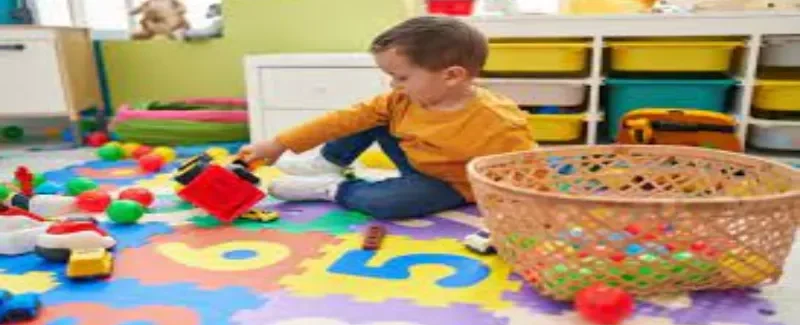Why Babies Cry And How To Soothe Them?

Posted Date: May 1st, 2023
Babies cry for many reasons, and it is their primary way of communicating with caregivers. As a caregiver, it is essential to understand the reasons behind a baby’s crying and how to soothe them. In this article, we will explore the various reasons why babies cry and provide some tips on how to soothe them.
Why do Babies Cry?
1. Hunger
One of the most common reasons why babies cry is because they are hungry. Crying is their way of communicating their need for food. Babies have small stomachs and need to feed frequently, which means they may cry when they are hungry. As a caregiver, it is essential to feed a baby on demand and not wait until they cry to feed them.
2. Dirty Diaper
Another reason why babies cry is because they have a dirty diaper. Babies do not like the feeling of a dirty diaper, and it can be uncomfortable for them. It is essential to check a baby’s diaper frequently and change it as needed.
3. Sleepiness
When babies are tired, they may cry as a way of letting caregivers know that they need to sleep.
4. Tiredness
Babies cry when they are tired and need to sleep. It is essential to establish a regular sleep routine and ensure that the baby gets enough sleep during the day and at night. If a baby is having trouble sleeping, it may be helpful to create a calm and quiet environment and use soothing techniques like rocking or singing.
5. Overstimulation
Babies can become overwhelmed when they are overstimulated by noise, lights, or other sensory input. When a baby is overstimulated, they may cry or become fussy. It is essential to provide a calm and quiet environment for a baby and limit the amount of sensory input.
6. Discomfort or Pain
Babies may cry when they are uncomfortable or in pain. This can be due to a variety of reasons, such as a tight clothing, a scratchy tag, or even teething. It is essential to check a baby for signs of discomfort or pain and address any issues as soon as possible.
7. Colic
Colic is a term used to describe excessive crying in babies, often for no apparent reason. Colic usually starts around three weeks of age and can last for several months. It can be a frustrating and exhausting experience for caregivers. If a baby has colic, it is essential to provide a calm and quiet environment and use soothing techniques like swaddling, rocking, or white noise.
8. Illness
Babies may cry when they are ill or have an infection. It is essential to check a baby’s temperature and look for other signs of illness, such as a runny nose or a cough. If a baby is ill, it is important to seek medical attention.
Loneliness: Babies are social creatures and may cry when they feel alone or isolated.
Need for physical contact: Babies need physical contact, like being held or cuddled, to feel secure and comfortable. They may cry to signal that they need this contact.
Temperature: If a baby is too hot or too cold, they may cry as a way of signaling that they need their temperature regulated.
Boredom: Babies need stimulation and may cry when they are bored or not getting enough interaction.
Sensory overload: Some babies may be sensitive to certain sounds, smells, or textures, and may cry when they are overstimulated by these sensations.
Changes in routine: Babies thrive on routine, and changes to their routine can be distressing. They may cry as a way of signaling that they need things to go back to normal.
Separation anxiety: As babies grow and develop, they may experience separation anxiety when separated from their caregivers. They may cry as a way of signaling that they need to be reunited.
Frustration: As babies learn new skills, like rolling over or crawling, they may become frustrated when they can’t quite accomplish what they want to do. They may cry as a way of expressing this frustration.
Emotional needs: Babies have emotional needs, just like adults do. They may cry when they are feeling sad, scared, or overwhelmed.
In summary, babies cry for many reasons, and it can be challenging for caregivers to determine the cause of their crying. By understanding the common reasons why babies cry, caregivers can better respond to their baby’s needs and provide the care and comfort they need to thrive.
It is also important for caregivers to take care of themselves, as caring for a crying baby can be challenging and exhausting. Self-care practices like getting enough sleep, eating well, and taking breaks when needed can help caregivers better care for their baby.
If a baby’s crying persists or is accompanied by other symptoms like fever or difficulty breathing, it is important to seek medical attention. A healthcare provider can help determine the underlying cause of the crying and provide appropriate treatment.
In summary, understanding why babies cry and how to soothe them is an essential part of caregiving. By providing a calm and nurturing environment, using soothing techniques, and seeking medical attention when needed, caregivers can help their baby feel safe, secure, and loved. With patience, persistence, and love, caregivers can navigate the challenges of caring for a crying baby and provide them with the care they need to thrive.
How to Soothe a Crying Baby?
1. Rocking
Rocking a baby is a soothing technique that can help calm a crying baby. It can be done by holding the baby and gently rocking back and forth or by using a rocking chair or a baby swing.
2. Swaddling
Swaddling is a technique where a baby is wrapped snugly in a blanket. It can help a baby feel secure and calm. It is essential to ensure that the baby’s face is not covered, and the blanket is not too tight.
3. White Noise
White noise is a sound that contains all frequencies of sound in equal amounts. It can be a soothing sound for babies and can help drown out other noises that may be overstimulating. White noise can be created by using a white noise machine or a mobile app.
4. Sucking
Babies have a natural instinct to suck, and sucking can be a soothing technique for them. This can be done by breastfeeding, bottle-feeding, or using a pacifier.
5. Skin-to-Skin Contact
Skin-to-skin contact is a technique where a baby is placed directly on a caregiver’s bare skin, usually on the chest. This technique can help regulate a baby’s body temperature and heart rate, as well as promote bonding between the caregiver and the baby.
6. Change of scenery
Sometimes, a change of scenery can help calm a crying baby. This can be done by taking the baby for a walk outside or moving to a different room in the house.
7. Calm and quiet environment
A calm and quiet environment can help soothe a crying baby. It is essential to eliminate any potential sources of overstimulation, such as loud noises or bright lights, and create a soothing atmosphere.
8. Patting or Rubbing
Patting or rubbing a baby’s back can be a soothing technique, especially if the baby is experiencing discomfort or pain. It is important to be gentle and use a firm but gentle touch.
Singing or humming
Singing or humming a lullaby can be a soothing technique for a crying baby. The sound of the caregiver’s voice can be calming and comforting for the baby.
9. Distraction
Sometimes, distracting a crying baby can be helpful. This can be done by introducing a new toy or object, or by making silly faces or noises.
Conclusion
In conclusion, babies cry for many reasons, and it is their primary way of communicating with caregivers. As a caregiver, it is essential to understand the reasons behind a baby’s crying and how to soothe them. By using techniques like rocking, swaddling, white noise, skin-to-skin contact, and creating a calm and quiet environment, caregivers can help soothe a crying baby. It is important to remember that every baby is unique, and what works for one baby may not work for another. With patience, persistence, and love, caregivers can help soothe their crying baby and provide them with the care and comfort they need.
Related Posts
Dr. Emily Carter is a seasoned health writer and wellness advocate at Healths News Today. With over a decade of experience in the healthcare industry, she specializes in translating complex medical information into easy-to-understand content that empowers readers to make informed decisions about their health.







